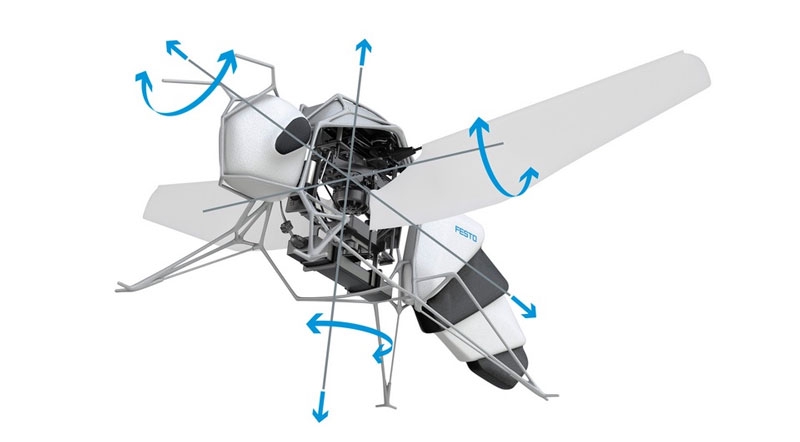BionicBee is the smallest flying robot in Festo’s arsenal, weighing only 34 grams, measuring 22 centimeters in length, and having a wingspan of 24 centimeters. Its creation was inspired by the flight of real bees. Developers utilized generative design methods to create an optimal lightweight structure using minimal materials to achieve maximum stability.
The robot’s design includes a brushless motor, three servo motors, a battery, a gearbox, and various control elements, all housed in a compact body. The servo motors adjust the wings’ geometry, allowing for changes in flight direction and altitude. Bee robots can fly forward, tilt, and adjust the wing angle for lift, as well as perform turns and complex maneuvers in the air.

To ensure coordinated swarm flight, BionicBee utilizes an indoor positioning system with ultra-wideband (UWB) anchors. This system allows the robots to precisely determine their positions in space and synchronize their trajectories for safe flight. An important feature is the automatic calibration function, which enables robots to compensate for minor assembly differences and ensure uniform behavior within the swarm.

The BionicBee project demonstrates how research and inspiration from nature can lead to the development of advanced robotics technologies. Festo plans to leverage this experience to develop even more complex bionic and swarm robotics systems in the future.











